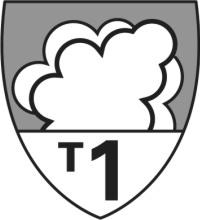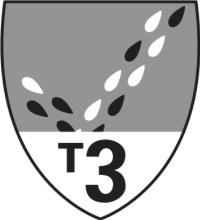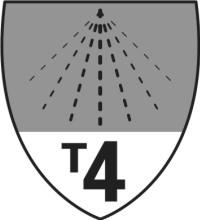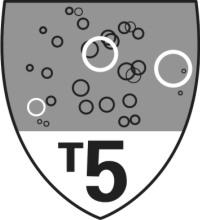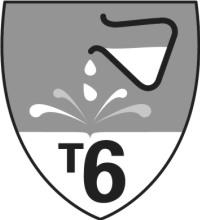- today
- label Guide
- favorite 1 likes
Protective clothing against chemical agents
Clothing that provides protection against hazardous chemicals in the form of: gases, vapors, liquids and dust. You can also find other terms such as: chemical protective clothing, chemical resistant clothing, chemical clothing, chemical protective clothing.
Clothing from this group is used in chemical work in agriculture, in the event of chemical accidents, in varnishing works, in the chemical, food and pharmaceutical industries, and in working with asbestos and in all other works where there is a risk of contact with harmful substances.
Pursuant to Directive 89/686 / EEC, clothing protecting against hazardous factors is classified as Personal Protective Equipment (PPE) Category II or Category III, i.e. protection against life-threatening hazards or hazards that may cause serious and irreversible damage to health.
Such clothing is marked with an appropriate pictogram:
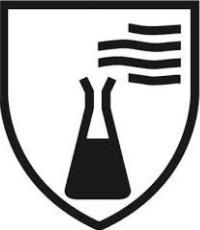
Pictogram indicating clothing that protects against chemical agents.
Division of chemical protective clothing
European standards classify chemical protective clothing based on the intensity with which the substance acts on the clothing and the physical state of the chemical. Clothing is divided into 6 types (type 1 - the highest protection, type 6 - the least protection):
|
Type |
Pictogram (according to DuPont) |
Description |
Standard |
|
Type 1 |
|
Gas-tight clothing TYPE 1 – Protective clothing against chemicals in the form of gases, liquids, aerosols and solid particles. TYPE 1-ET – Requirements for gas-tight clothing intended for chemical rescue services. |
EN 943-1 EN 943-2 |
|
Type 2 |
|
Non-gas-tight clothing Protective clothing against chemicals in the form of gases, liquids, aerosols and solid particles. The design of the garment does not ensure complete tightness. |
EN 943-1 |
|
Type 3 |
|
Protective clothing against liquid jets Protective clothing against the action of a stream of pressurized liquids |
EN 14605 |
|
Type 4 |
|
Protective clothing against sprayed liquids Protection against the action of a chemical substance in the form of a sprayed liquid (not under pressure). |
EN 14605 |
|
Type 5 |
|
Protective clothing against solid particles Dustproof clothing to protect against dust. |
EN 13982-1 |
|
Type 6 |
|
Clothing with limited effectiveness of protection against the action of a chemical substance in the form of a liquid Splash protection |
EN 13034 |
The level of chemical resistance of protective clothing against chemical agents depends mainly on the material from which it is made.
Due to the resistance of the clothing material to the penetration of chemicals, the resistance class is divided into the breakthrough time measured in accordance with the EN ISO 6529 standard, i.e. the time that the molecules of the chemical substance need to pass through the thickness of the material.
The following resistance classes are distinguished:
- class 1 - breakthrough time> 10 min
- class 2 - breakthrough time> 30 min
- class 3 - breakthrough time> 60 min
- class 4 - breakthrough time> 120 min
- class 5 - breakthrough time> 240 min
- class 5 - breakthrough time> 480 min
Due to the type of chemical substance against which the clothing is intended to protect, there are clothing that protects against:
- inorganic acids and bases (hydrochloric acid, sulfuric acid, nitric acid, sodium base, potassium base), (acid-resistant clothing),
- organic acids (lactic acid, acetic acid, formic acid),
- oils (vegetable oils, animal oils, mineral oils), (oil-resistant clothing),
- plant protection products,
- paints and varnishes,
- organic solvents (e.g. benzene, acetone, toluene).
Due to the time of use, chemoprotective clothing is divided into:
- clothing intended for short-term or single use
- clothing intended for long-term use (reusable).
If the garment is properly selected for both long-term and short-term use, it will guarantee an adequate level of protection. However, there is a difference in durability which is due to the type of materials used.
Clothing for short-term use is made of nonwovens and foil and is used, inter alia, in for works where rapid contamination of clothes occurs (e.g. during varnishing, painting).
Long-lasting clothing is made of coated and impregnated fabrics. This guarantees greater resistance to aggressive chemicals and better mechanical strength, which is necessary for repeated use. Reusable clothing must be decontaminated (cleaned) after each use (in case of contact with chemicals).
Clothing protecting against dust (dustproof clothing)
When the worker comes into contact with non-toxic dust, use dust-proof (dust-proof) clothing, the construction of which should prevent dust penetration. Usually these are coveralls that have cuffs on the sleeves and legs, as well as a collar or a hood that are tailored to the wearer. For this type of clothing, fabrics with special weaves are used, which are characterized by sufficient dust-tightness while allowing air to pass through to a limited extent.
To protect against toxic dust (e.g. asbestos), clothing should meet the requirements of EN 13982-1, mainly in terms of internal leakage. According to the above division, dustproof clothing is classified as type 5 chemically protective clothing and is most often made of Tyvek coated polypropylene nonwoven fabric.
Protective clothing against liquid chemicals
When there is a risk of contact with liquid hazardous substances, choose protective clothing taking into account the intensity of the action of the liquid:
Liquid spray protection clothing - type 6 - Provides protection against short-term and low-intensity contact with liquid chemicals, e.g. against accidental splashing of oils and solvents, protective clothing against diluted acids and bases. The clothes can be made of impregnated fabrics and nonwovens. It is light and airy. The parameter that characterizes the protective properties of materials intended for protective clothing against spraying with liquid chemicals is the non-wettability index and the permeability index.
Clothing protecting against sprayed liquid - type 4 - Such clothing should be leakproof. It is made of materials coated with plastics that have different chemical resistance. The manual should contain the chemical resistance table provided by the manufacturer. In addition, the instructions for use should contain information on the breakthrough time of the material by a given substance (resistance class). Clothing protecting against chemicals in the form of a sprayed liquid is used, for example, in spraying plants, in varnishing works, etc.
Clothing protecting against liquid jets - type 3 - The requirements for the materials are the same as for the above-mentioned type 4 clothing, but the clothing should be designed and sealed to minimize the risk of leakage due to pressurized liquid spraying.
Gas-tight protective clothing
To protect against chemicals in the form of gases, vapors, liquids and fine solids, it is essential to completely isolate the worker from the environment. For this purpose, gas-tight clothes are used, which, when combined with insulating respiratory protection equipment, constitute an effective barrier separating the human body from a chemically contaminated work environment.
Gas-tight clothing consists of a coverall with boots, fastened with a gas-tight zipper and gloves attached to the sleeves of the coverall with special, tight clamps.
According to the EN 943-1 classification, gas-tight clothing is of two types:
- type 1 - clothing that protects the entire body, has gas-tight features - meets the requirements of the leak test according to EN 464,
- type 2 - clothing that protects the entire body, but does not meet the requirements of the tightness test according to EN 464, in which protection against the penetration of hazardous substances is provided by overpressure inside the suit.
Under type 1, there are three types of gas-tight clothing:
- type 1a - clothing equipped with breathing apparatus worn inside the suit - respiratory protective equipment is protected against hazardous media by the suit,
- type 1b - clothing with breathing apparatus worn outside the suit - respiratory protective equipment is not protected against the action of hazardous media
- type 1c - clothing with breathing air supplied from an external compressed air line.
Selection of clothing that protects against chemical factors
Initially, steps must be taken to eliminate or reduce the cause of the threat. The use of chemical protective clothing and other PPE is the last barrier protecting the employee. Its use is necessary when, despite other preventive measures, the risk still exists.
How to choose anti-chemical clothing?
- Identification of the chemical substance - Know the type and form of the chemical (gas, vapor, liquid, dust). It is necessary to take into account the possible change of the state of aggregation, e.g. from liquid to gaseous) under the influence of temperature increase. Thanks to this, it will be possible to make a preliminary selection of the required type of clothing according to the above-mentioned CE standards (type 1 to 6).
- Identification of other threats - there is a risk of additional threats at the station, e.g. high temperature, hot spatter, explosive atmosphere, biological substances, radiation, electrostatic hazard, sharp edges. Protective clothing must additionally meet the requirements related to these risks.
- Determining the intensity of the action of a chemical substance - this applies to the liquid form and it should be determined whether the risk is incidental, i.e. contamination with a harmful liquid or the liquid is in the form of an aerosol, or there may be an intense splash under high pressure. Thanks to this, it will be possible to classify as appropriate to type 6, 4 or 3 according to the above-mentioned CE standards.
- Determining the concentration and toxicity of a chemical substance - no garment can guarantee 100% tightness. For example, according to the Type 5 standard, leakage into the suit is allowed at 15% in 8 out of 10 suits tested. In the event that the substance (dust) is very toxic and / or is present in high concentration, the protection level should be increased by selecting type 4 or 3 or even type 1 coveralls in extreme cases.
- Breakthrough time check - each manufacturer should have tables specifying the time it takes for the chemical to penetrate the material. This allows you to provide adequate protection, but also to optimize the cost of clothing. The type of chemical compound and its concentration determine the choice of material for clothing.
- Determining the risk of mechanical damage - the chemically protective properties of the garment will be maintained only when no mechanical damage to the material or seams of the garment occurs. You need to analyze the intensity of the work and the possible risk of sharp edges and rough surfaces. The mechanical properties of the material and seams are characterized in the form of classes, which allows for comparison and selection.
- Work comfort - The greater the degree of protection, the less comfortable wearing the suit. Heavy material, less flexible and prone to movement, and not permeable to air. Comfort is also influenced by the cut of the suit and a properly selected size ensuring freedom of movement.
Additional notes
- The standards for chemical protective clothing define only the minimum requirements for mechanical and protective parameters, including e.g. tightness. In practice, clothing classified to the same type (meeting the requirements of the same standard) may differ significantly depending on the model or manufacturer.
- Protective clothing types 3, 4 and 6 also qualify for the so-called partial body protection, eg laboratory coats, front aprons, protective sleeves, "dungarees", hoods. (Supplementary designation "PB").
- In order to choose the right protection against a threat, it is necessary to carefully evaluate them.
- Remember about other equipment that protects against chemicals, respiratory protection, chemical protection gloves, face and eye protection. Protective equipment should be compatible and not restrict protective properties. Pay attention to the proper tightness between the clothing and gloves, shoes or the mask.
Safe working hours in protective clothing against chemicals
Tight protective clothing interferes with the exchange of heat and moisture between the body and the environment. The heat emitted by the employee's body cannot be completely transferred to the environment. Then, it accumulates under the protective barrier, leading to an increase in human body temperature, and intense sweat secretion causes an increase in the humidity of the microclimate under the clothes. The intensity of these processes depends on the physical load of a person, climatic conditions in the surrounding environment and comprehensive protective clothing. Research has shown that the use of barrier protective clothing puts a strain on the user's body, mainly its cardiovascular system during exercise. For the same activities performed in a gas-tight suit, the energy expenditure of work is from 11 to 34% higher than in a garment made of denim fabric. During intensive work in barrier protective clothing that does not allow water vapor to pass through, it is necessary to properly organize work, which consists in taking breaks necessary for the regeneration of the body. Working time and breaks depend on the intensity of effort, working temperature and individual characteristics of the employee and should be determined by the services responsible for health and safety at work. Healthy people with proper blood pressure, high physical efficiency and an efficient sweating system should be selected for work.
In order to reduce the discomfort of working in barrier protective clothing, special barrier underwear made of double-layer knitted fabrics should be used underneath it. Protective clothing is put on directly over the underwear. The under-barrier underwear reduces the discomfort of work, has excellent sweat drainage from the skin of the wearer, while remaining dry next to the skin.

